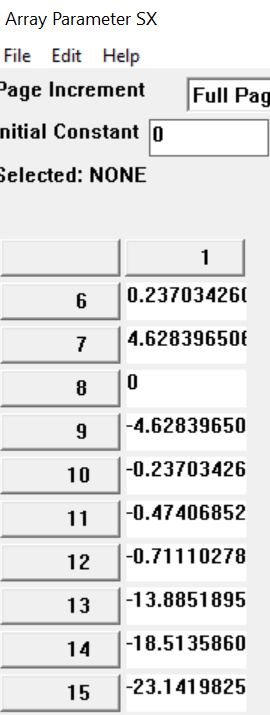Rodrigo Benitez
Civil/Environmental
Hi guys, I'm having some problem with exporting an ARRAY with with 15 values in 1 column to a .txt file in order to copy it to excel. I tried googling but still don't understand the format required, and the warning saying that I can't use the command *VWRITE directly in the GUI. Any help would be very appreciated.
This is my ARRAY in ansys:

This is my code to export it:
/INPUT,sx,txt
*CFOPEN,SX,txt
*VWRITE,sx(1)
(15E20.5)
*CFCLOSE
/OUTPUT,sx,txt
Thanks in advance.
This is my ARRAY in ansys:

This is my code to export it:
/INPUT,sx,txt
*CFOPEN,SX,txt
*VWRITE,sx(1)
(15E20.5)
*CFCLOSE
/OUTPUT,sx,txt
Thanks in advance.
